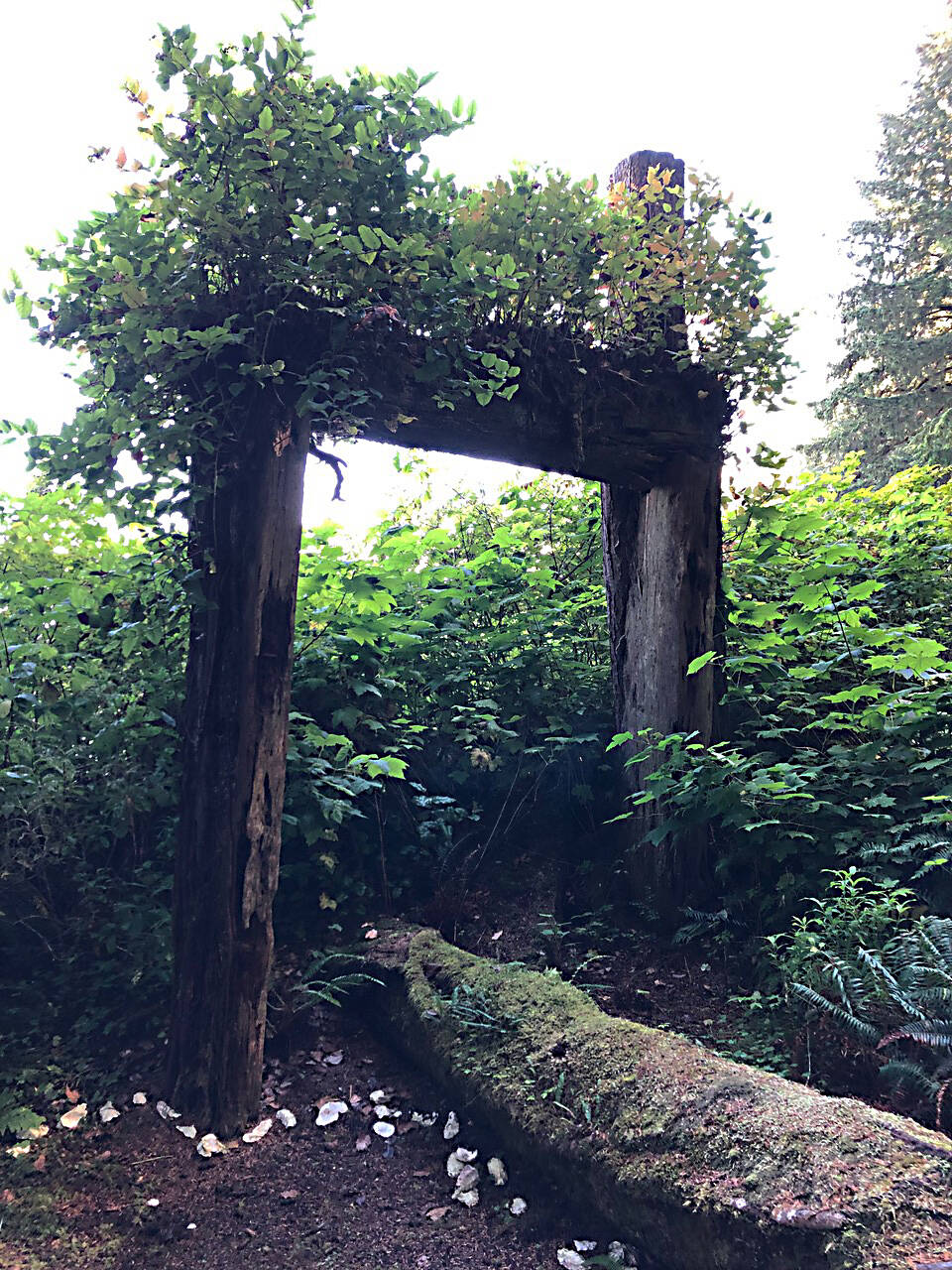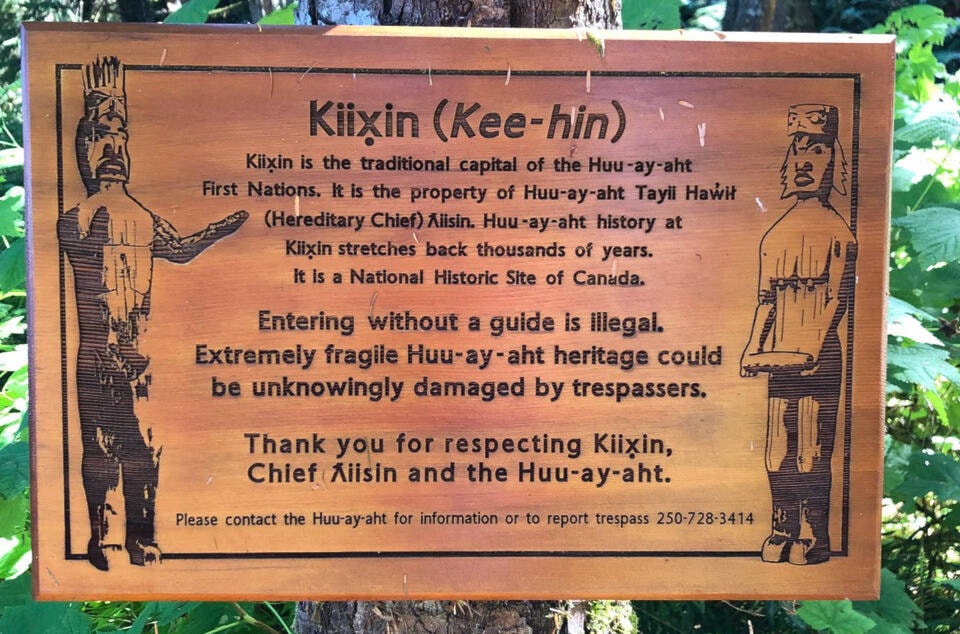By Marc Lalonde, Local Journalism Initiative Reporter IORI:WASE
Part of an Indigenous community on the west coast of Vancouver Island whose roots trace back almost 3,000 years — dating back to 1000 B.C. — was once more recognized by Parks Canada this week.
The community of Huu-ay-aht First Nations celebrated the erection of the plaque originally presented to the community in 2002, a couple of years after the community’s Kiixin village and fortress were officially designated a Historic Site in 1999.
Kiix̣in is the site of a 19th-century village and fortress that exhibits evidence of continuous occupation of the area for almost 3,000 years. It is also the only known traditional First Nations village of more than 100 villages on the southern British Columbia coast that still features significant, standing traditional architecture.
The site’s natural features made it an ideal location for occupation and defense. It is characteristic of Nuu-chah-nulth defensive sites and warfare patterns, resource extraction and commercial practices, and illustrates changing Nuu-chah-nulth political and economic patterns in the 18th and 19th centuries. To this day, it remains a sacred site to the Huu-ay-aht First Nations people.
In 1999, the feds designated Kiix̣in as a national historic site, with the official recognition referring to four distinct archaeological sites, which include the main village and fortress and two related archaeological sites.
In 2002, a commemorative plaque was presented to Huu-ay-aht First Nations by Parks Canada, and this week, both parties came together to reveal the plaque which has now been installed on a carved cedar frame at the Kiix̣in Village and Fortress for visitors and locals to enjoy.
The Chief Councillor of the Huu-ay-aht First Nation said the erection of the plaque allows visitors to better understand the historical significance of the village and its importance to the defence of the island.
“This official installation of the plaque signifies the importance of Kiix̣in and the rich history it tells. Kiix̣in is the main attraction of Huu-ay-aht’s cultural tourism as it offers a truly unique cultural experience for guests who come and visit Huu-ay-aht’s Ḥahuułi (traditional territory),” said Robert J. Dennis Sr. “Now, when visitors come to Kiix̣in, they will hear our stories, see our culture and understand the great Canadian national historical site designation it holds.”
Parks Canada CEO Ron Hallman agreed, saying the Huu-ay-aht commitment to preserving history is to be credited for this commemoration.
“Today, Parks Canada is honoured to join with Huu-ay-aht First Nations in commemorating Kiix̣in Fortress National Historic Site. National historic designations are the most significant form of historical recognition that is bestowed by the Government of Canada,” he said. “Parks Canada has enjoyed a positive relationship with the Huu-ay-aht and this designation would not be possible, nor as meaningful, without this Nation’s commitment to preserving and sharing its knowledge and history.”
RELATED: Hundreds tour ancient Huu-ay-aht village for pilot project

